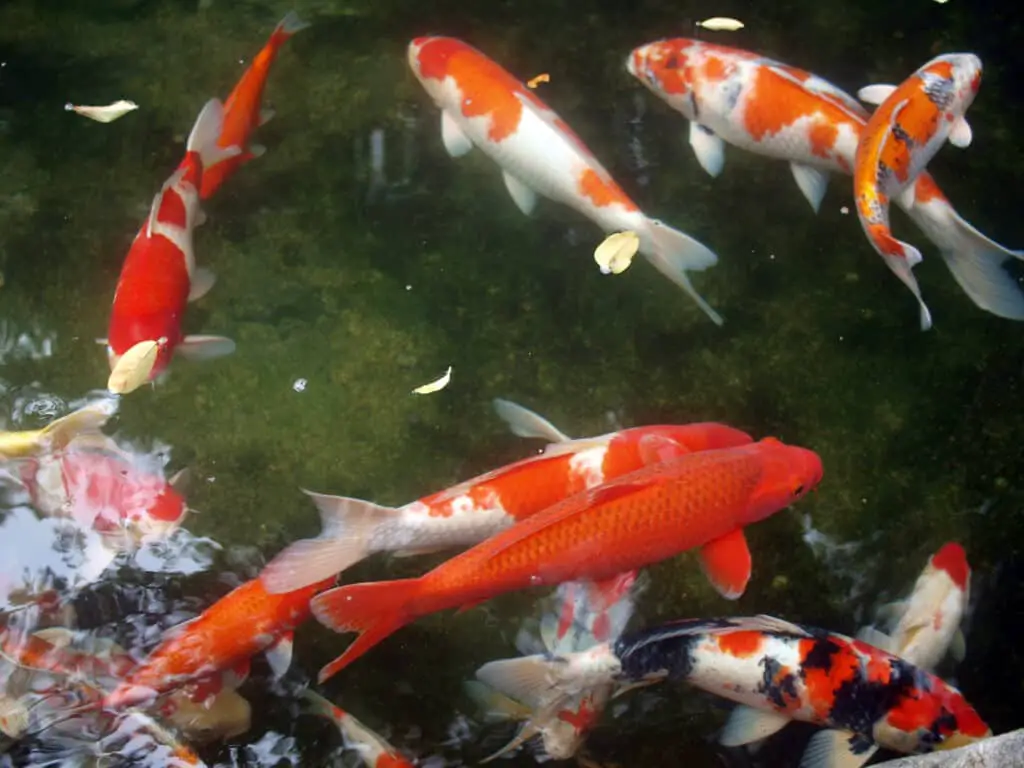
The tradition of keeping large Koi started in the 17t century in Japan by rice farmers who kept common Carp in their rice paddies. As the custom grew, different color variations in some of the Carp were noticed, and through forced breeding, these color variations grew, so Koi came into being.
To vacuum a Koi Pond, all you need to do is first clean the surface of the pond and then use a pond vacuum cleaner, as you would a house vacuum cleaner, to suck up all of the growth and “muck” which is defacing the sides and floor of the Koi Pond. Regular maintenance should then keep it clean.
When you need to clean your Koi Pond, removing the fish, and draining the water should be a last resort. Draining the water is stressful for the fish and disturbs the natural ecosystem developed in the Koi Pond. It removes the beneficial bacteria populations, decreasing the ponds’ ability to self-clean and remain healthy.
Pro Tip: If you’re tired of wasting money and making costly mistakes on the koi-keeping hobby or are thinking about buying koi fish but don’t know where to start, I strongly suggest you check out this ebook. I recently read this ebook, and it contains SO much useful information, such as:
- 3 proven steps to identify koi fish diseases
- WARNING: 3 things you should NEVER do when it comes to caring for koi
- When to seek professional help when it comes to looking after your koi
How To Vacuum A Koi Pond
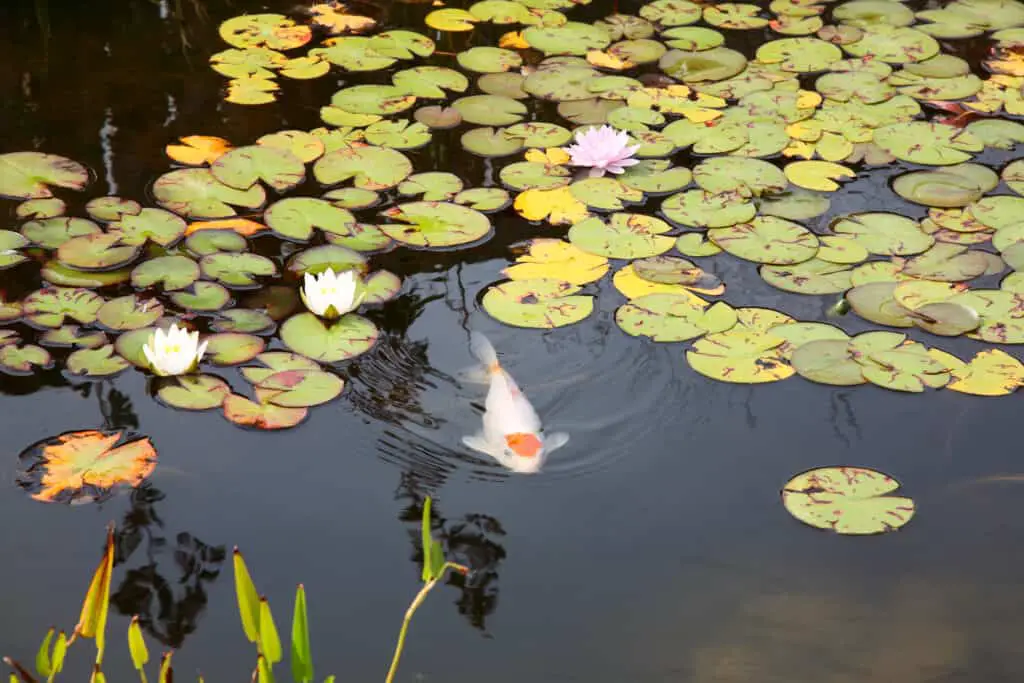
If your Koi Pond does not have an effective aeration system, there is a good chance that the sides and floor are covered in a slimy mucky growth.
This material is often a slimy blackish-brown substance that may smell like sulfur or other pungent odors.
All kinds of organic material contribute to this mix, including grass clippings, droppings, and dead bugs, which sink to the bottom and decompose into a nasty-smelling goo.
If this growth becomes too thick, it deposits nutrients into the water that allow algae o thrive.
If it is not removed once a year, it will worsen.
Undertake the following steps to vacuum your Koi Pond and clean it effectively.
Step 1 – Remove Floating Material From The Koi Pond
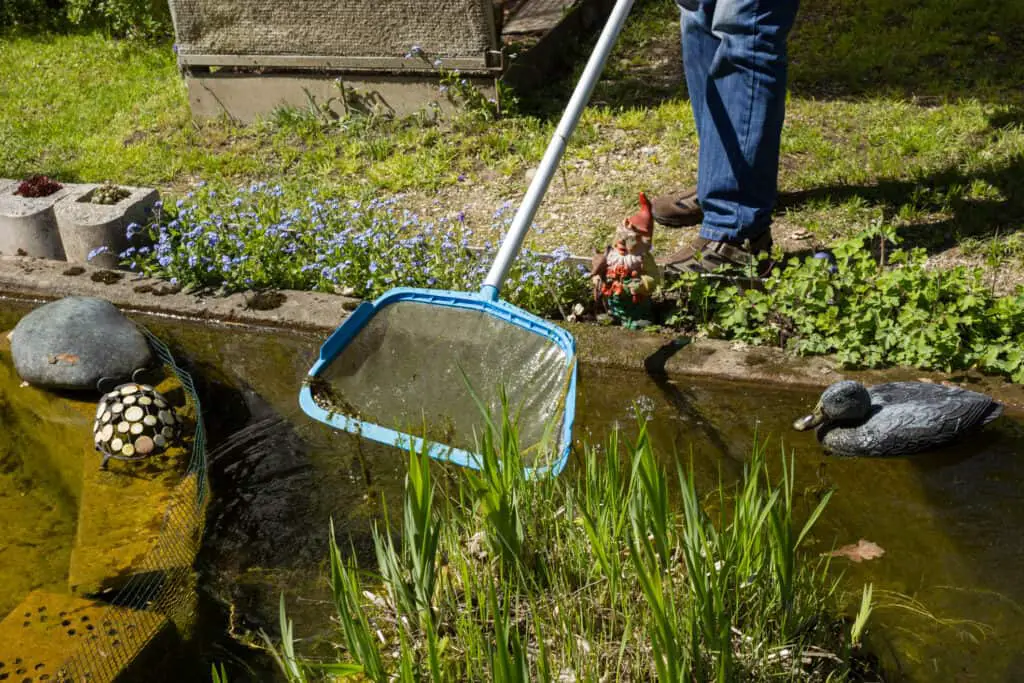
Use a leaf skimmer to remove all of the debris floating on the surface of the Koi Pond. Swimming pool leaf skimmers serve the purpose well; however, purpose-designed pond nets are available and have a wider diameter, giving a more extensive scoop area.
The debris you will remove will include wind-born material such as paper and plastic, leaves, sticks, twigs, and dead insects or larvae.
Installing a permanent pond skimmer is an effective way of keeping the surface of the Koi Pond clean.
Step 2 – Vacuum The Koi Pond
Once the surface is cleaner, you can begin cleaning the sludge off the bottom of the Koi Pond.
Remember, you are trying to maintain as healthy an ecosystem as possible for the Koi.
You don’t need to make the Koi Pond floor and walls spotlessly clean. You are aiming for a balance.
If you have a pond vacuum, you should bring it out of storage and connect all the parts.
Carefully use the vacuum to suck up the debris from the bottom and sides of the Koi Pond. If you have a large Koi pond, cleaning the pond in stages may be necessary, emptying the vacuum as it fills and then moving on to the next step.
Remember that the deeper your Koi Pond is, the more powerful the motor on your pond vacuum needs to be.
After you have finished vacuuming the Koi Pond, empty the vacuumed-up debris from the vacuum tank and clean it thoroughly with water. Remember to clean the inside of the vacuum pipes as well.
Leaving these parts dirty means the vacuum starts to smell, but it will work less efficiently the next time because the “gunk” will have solidified and blocked the passages.
Here is a youtube video about how to vacuum a pond:
Time to vacuum the pond! – YouTube
Step 3 – Supplement The Koi Ponds Bacteria
When you have vacuumed the Koi Pond as best as possible, remove the vacuum and pour a dose of pond cleaner and bacteria treatment into the Koi Pond.
This material often comes in the form of pellets which sink to the bottom of the Koi Pond and essentially eat the muck in the area the pellet form.
These pellets are made up of healthy bacteria which consume the “muck.”
Regular Koi Pond Maintenance
If you perform regular maintenance on the Koi Pond, the water will remain healthier, and there will be a reduced need for drastic cleaning. Actions that you can regularly take include.
Skim The Surface Of The Koi Pond
The koi pond will be cleaner if you regularly remove leaves and other organic materials.
Stir The Bottom Of The Koi Pond
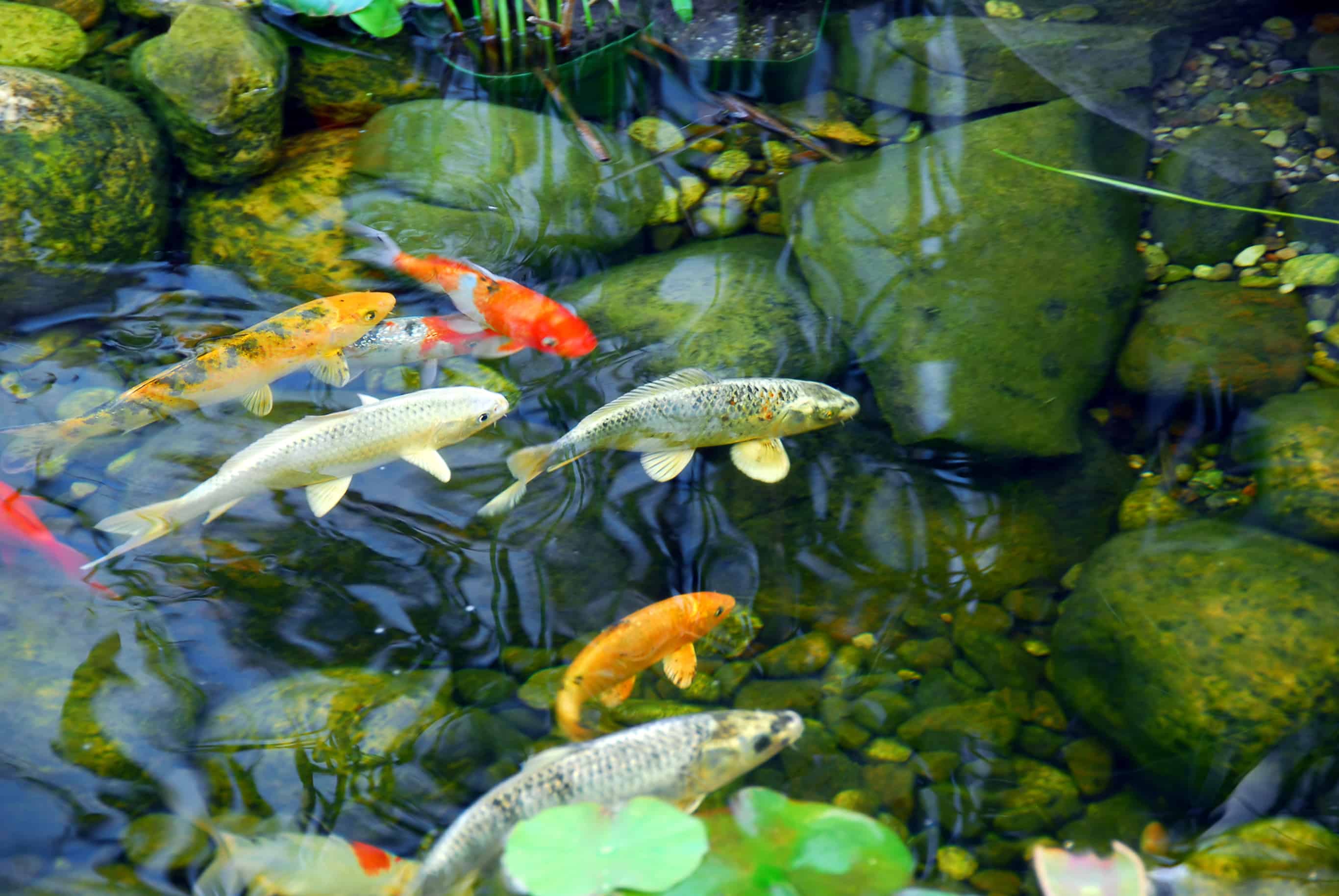
If you have a lot of rocks in the Koi Pond, you need to stir the substrate, or if they are larger rocks, vacuum them weekly. Doing this regularly helps remove dangerous anaerobic bacteria.
Throw Muck Cleaning Pellets Into The Koi Pond
If you use an additive that includes muck pellets or other beneficial bacteria, you should be able to keep the debris on the walls and floor of the Koi Pond under control.
The muck pellets are a long-lasting control and only need to be replaced, on average, every four months.
Top The Koi Pond Water Up
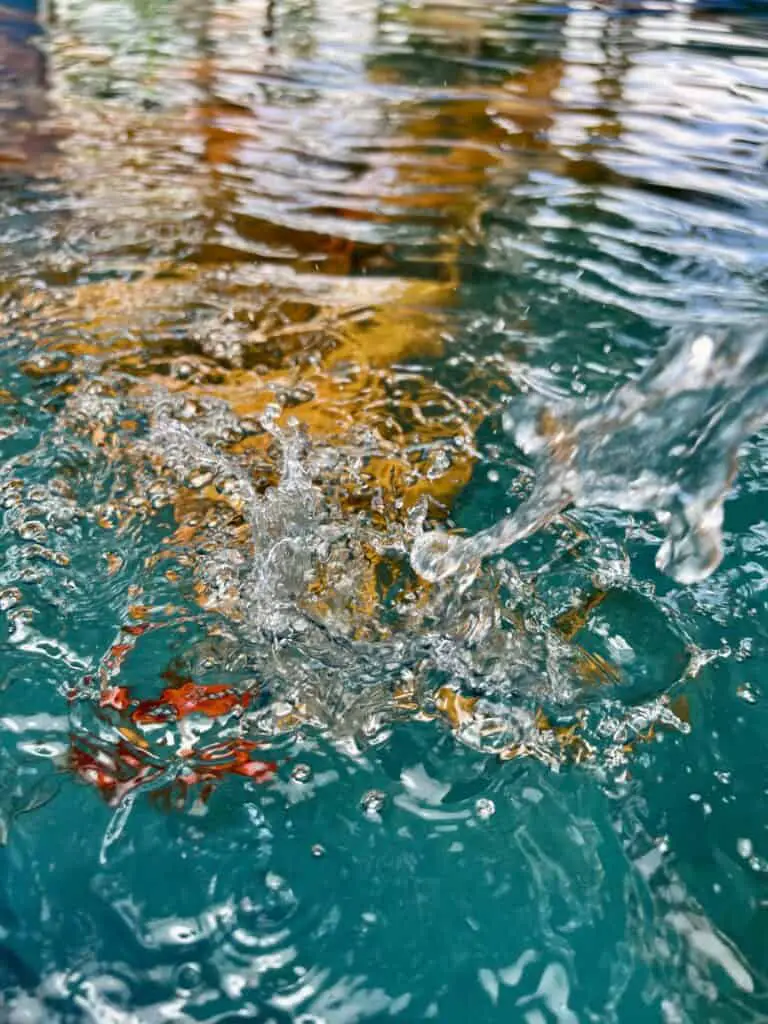
The water level will constantly be reduced by evaporation and possibly through small cracks in the Koi Pond.
Keeping the water topped off means only small quantities must be added, reducing the Koi’s stress.
How Often Should Your Koi Pond Be Cleaned?
Cleaning a Koi Pond is not something which should be carried out more than once per year, and if possible, you should leave it for even longer.
The best time to clean it is at the end of Summer beginning of Winter. It is the period when the Koi are the strongest and are therefore better able to handle the stress that cleaning the Koi Pond brings.
It is also easier to clean the organic matter when it is a little colder; therefore, the optimal temperature to wash your Koi Pond is when it reduces just below 700F (210C).
Conclusion
Vacuuming your Koi Pond should, at most, only be done once a year. If you find that there is a lot of sludge or other “muck” building up on the floor and wall of your Koi Pond, it may be the result of not regularly maintaining the pond throughout the year.
Although emptying the water and adequately scrubbing the walls down may be needed, this is a drastic step and should be avoided if possible. A regular daily and weekly check-up followed by an annual vacuum should be enough to keep the Koi Pond healthy.
References
https://www.wikihow.com/Clean-a-Koi-Pond
https://en.wikipedia.org/wiki/Koi
https://www.gardeningknowhow.com/ornamental/water-plants/wgen/cleaning-garden-ponds.htm

